Model Context Protocol (MCP) finally gives AI models a way to access the business data needed to make them really useful at work. CData MCP Servers have the depth and performance to make sure AI has access to all of the answers.
Try them now for free →Connect and Visualize Live SharePoint Data in Databricks Lakehouse Federation with CData Connect Cloud
Use CData Connect Cloud to integrate live SharePoint data into the Databricks platform and create visualization dashboards with real-time SharePoint data.
Databricks Lakehouse Federation enables organizations to query and integrate data from multiple sources without requiring data movement. It allows federated queries across databases, data warehouses, and lakehouses, providing a unified interface for data analysis and management within Databricks. When combined with CData Connect Cloud, it enables seamless access to SharePoint data for data virtualization, while also supporting data lineage and fine-grained access control.
This article explains how to use CData Connect Cloud to establish a live connection to SharePoint and how to access live SharePoint data from the Databricks platform.
About SharePoint Data Integration
Accessing and integrating live data from SharePoint has never been easier with CData. Customers rely on CData connectivity to:
- Access data from a wide range of SharePoint versions, including Windows SharePoint Services 3.0, Microsoft Office SharePoint Server 2007 and above, and SharePoint Online.
- Access all of SharePoint thanks to support for Hidden and Lookup columns.
- Recursively scan folders to create a relational model of all SharePoint data.
- Use SQL stored procedures to upload and download documents and attachments.
Most customers rely on CData solutions to integrate SharePoint data into their database or data warehouse, while others integrate their SharePoint data with preferred data tools, like Power BI, Tableau, or Excel.
For more information on how customers are solving problems with CData's SharePoint solutions, refer to our blog: Drivers in Focus: Collaboration Tools.
Getting Started
CData Connect Cloud offers a seamless SQL Server, cloud-to-cloud interface for SharePoint, enabling you to effortlessly create dashboards and visualizations using live SharePoint data in Databricks. While building visualizations, Databricks requires SQL queries to retrieve the necessary data. With built-in optimized data processing, CData Connect Cloud pushes all supported SQL operations (such as filters and JOINs) directly to SharePoint, utilizing server-side processing for fast and efficient data retrieval of SharePoint data.
Configure SharePoint connectivity for Databricks in CData Connect Cloud
To work with SharePoint data in Databricks - Lakehouse Federation, you need to connect to SharePoint from Connect Cloud and provide user access to the connection.
- Log into Connect Cloud, click Connections and click Add Connection.
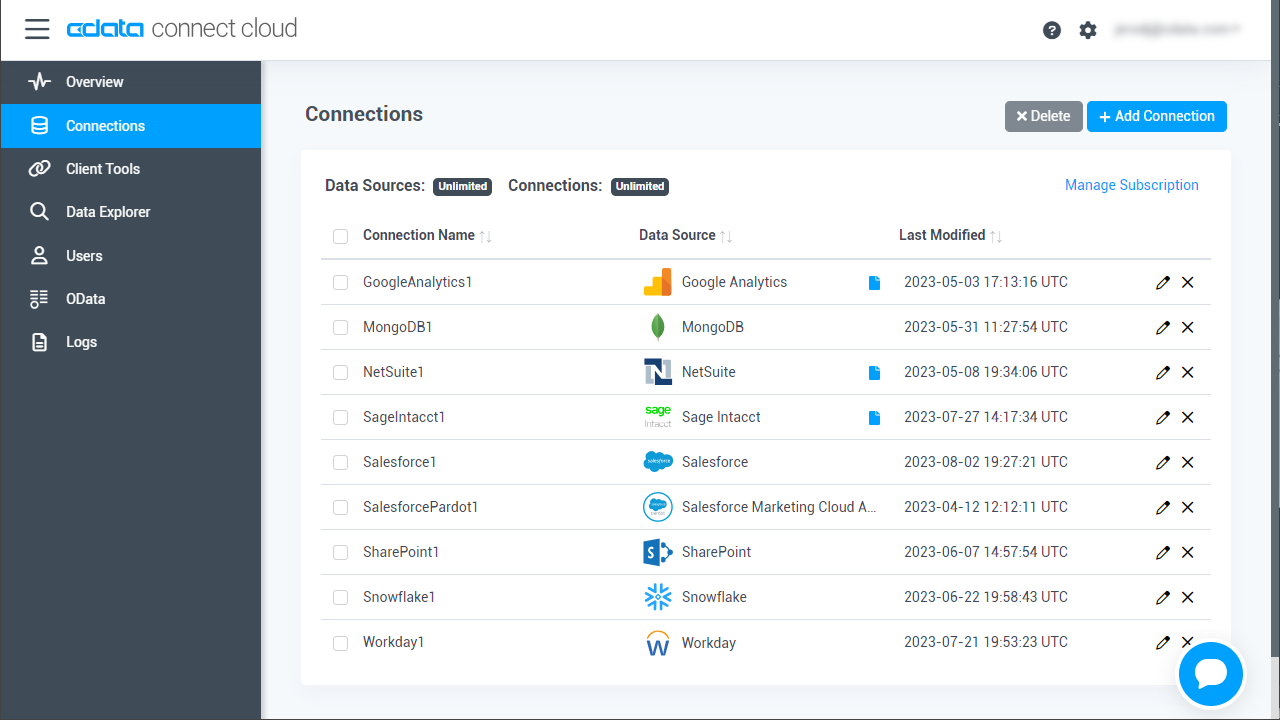
- Select "SharePoint" from the Add Connection panel.

-
Enter the necessary authentication properties to connect to SharePoint.
Set the URL property to the base SharePoint site or to a sub-site. This allows you to query any lists and other SharePoint entities defined for the site or sub-site.
The User and Password properties, under the Authentication section, must be set to valid SharePoint user credentials when using SharePoint On-Premise.
If you are connecting to SharePoint Online, set the SharePointEdition to SHAREPOINTONLINE along with the User and Password connection string properties. For more details on connecting to SharePoint Online, see the "Getting Started" chapter of the help documentation
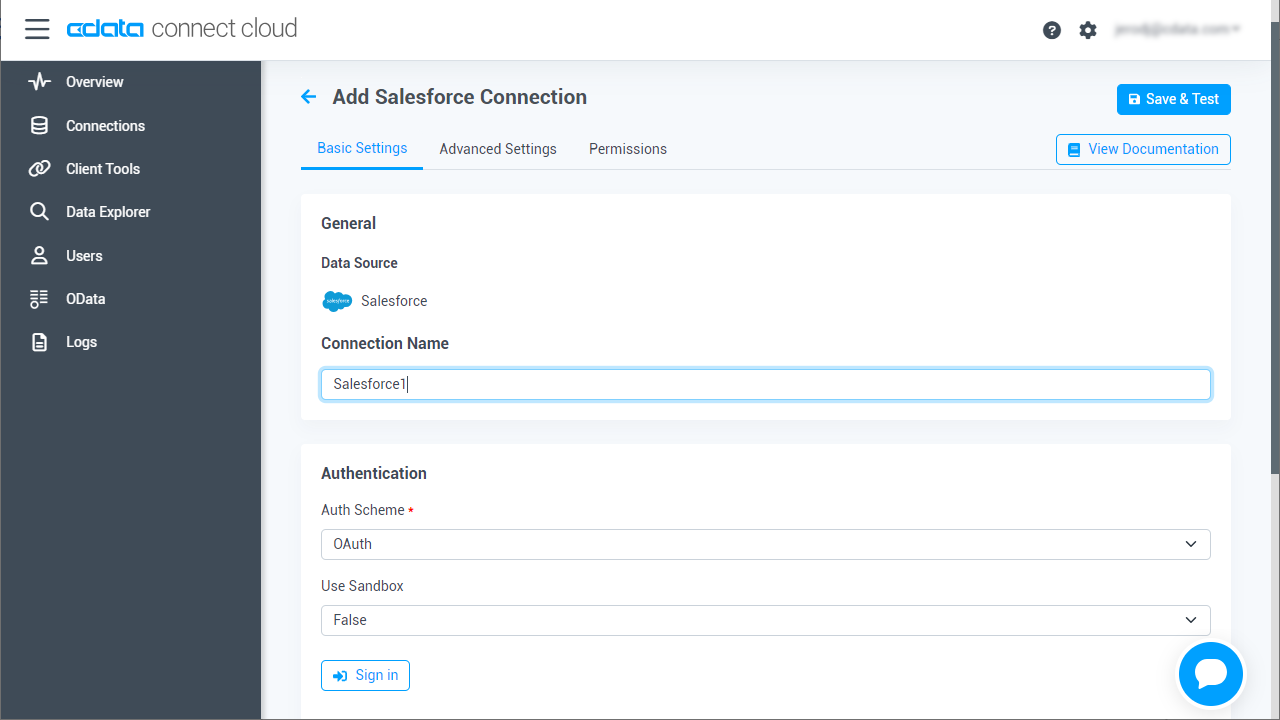
- Click Create & Test.
- Navigate to the Permissions tab in the Add SharePoint Connection page and update the User-based permissions
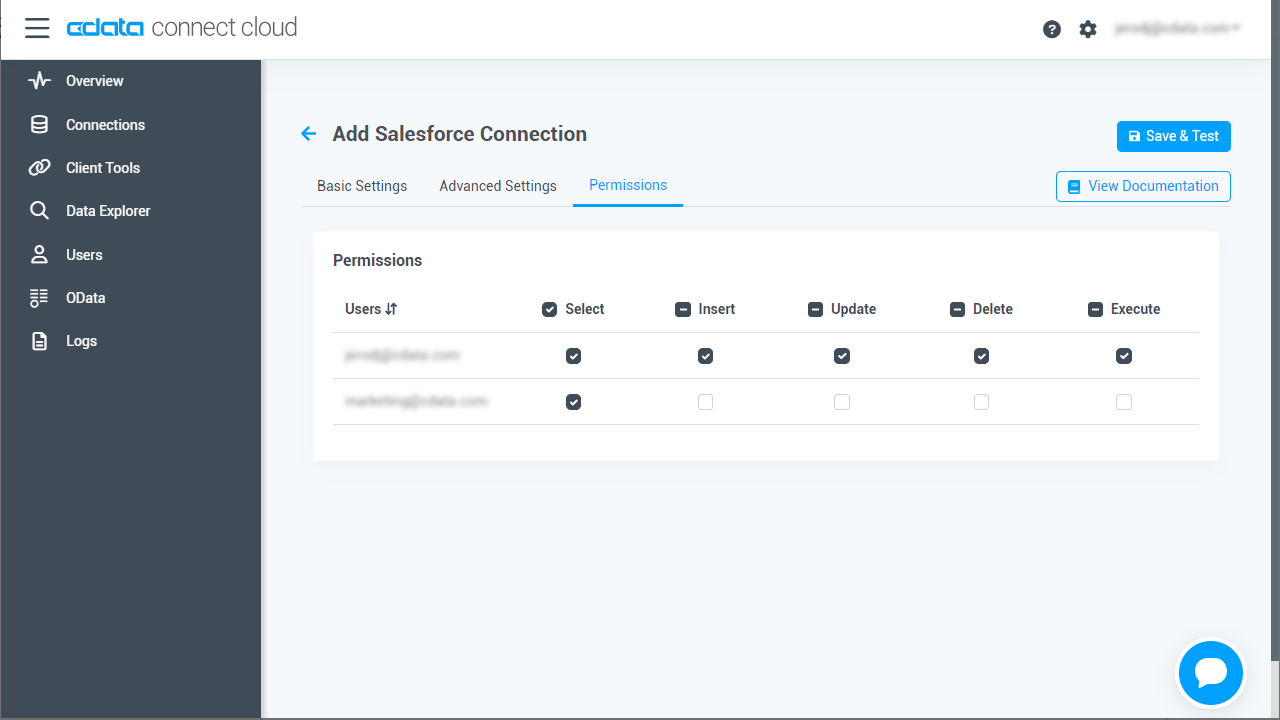
Add a Personal Access Token
If you are connecting from a service, application, platform, or framework that does not support OAuth authentication, you can create a Personal Access Token (PAT) to use for authentication. Best practices would dictate that you create a separate PAT for each service, to maintain granularity of access.
- Click on your username at the top right of the Connect Cloud app and click User Profile
- On the User Profile page, scroll down to the Personal Access Tokens section and click Create PAT
- Give your PAT a name and click Create
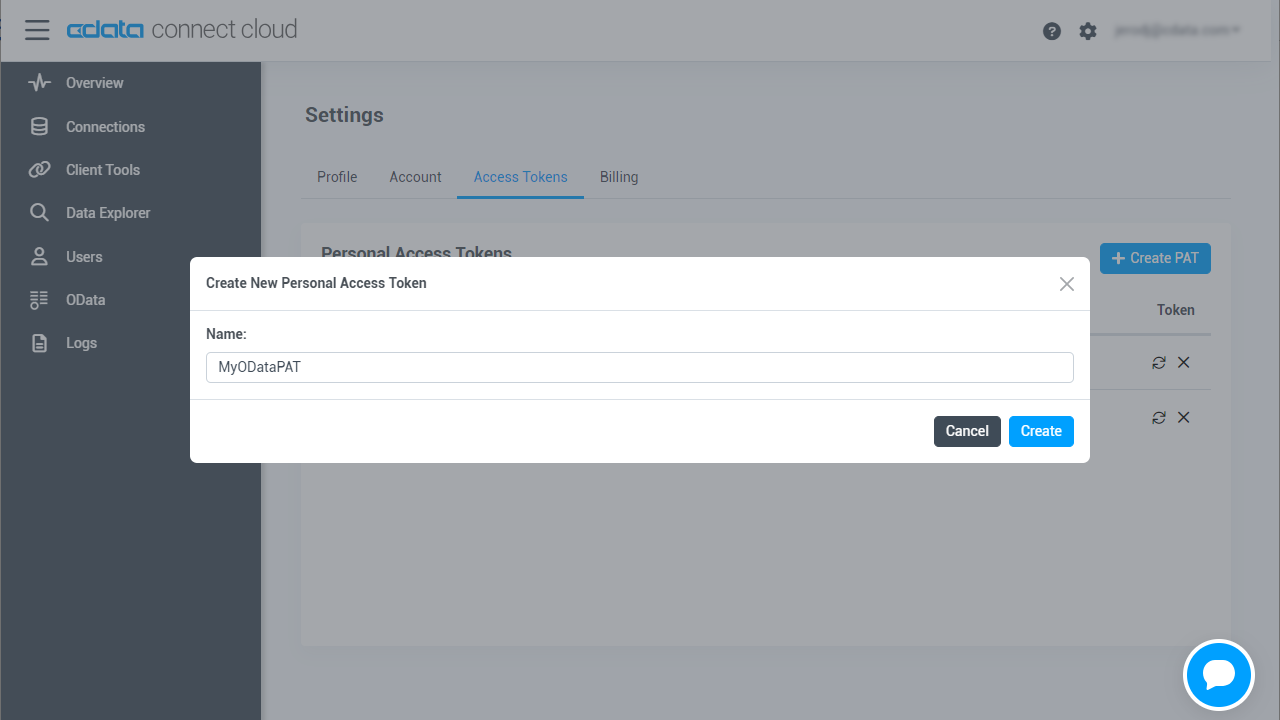
- The personal access token is only visible at creation, so be sure to copy it and store it securely for future use
With the connection configured, you are ready to connect to SharePoint data from Databricks.
Connecting live SharePoint data in Databricks
Follow these steps to establish a connection from Databricks to the CData Connect Cloud Virtual SQL Server API.
- Log into Databricks.
- Navigate to SQL Warehouses and start any warehouse of your choice.
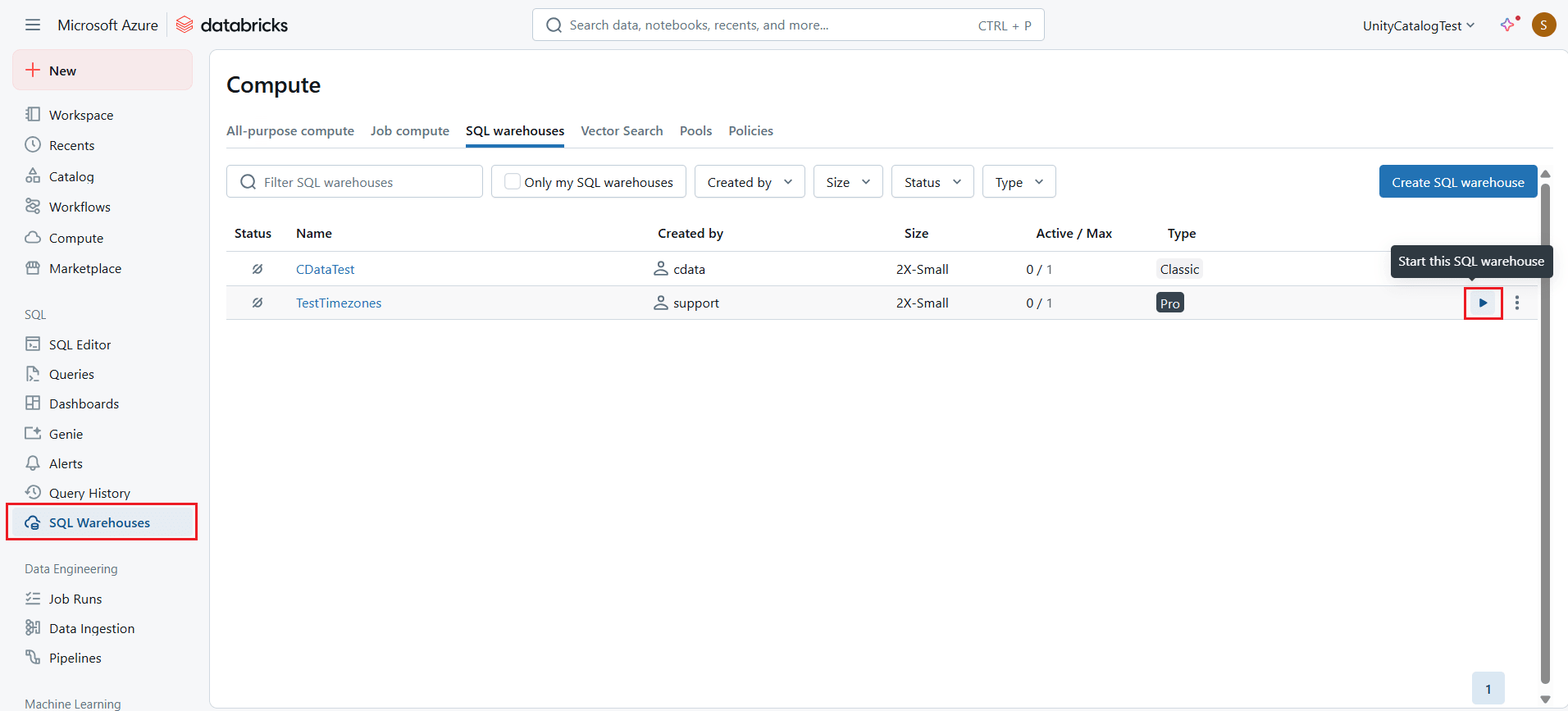
- In the navigation pane, select Catalog. Click and select Create a connection.
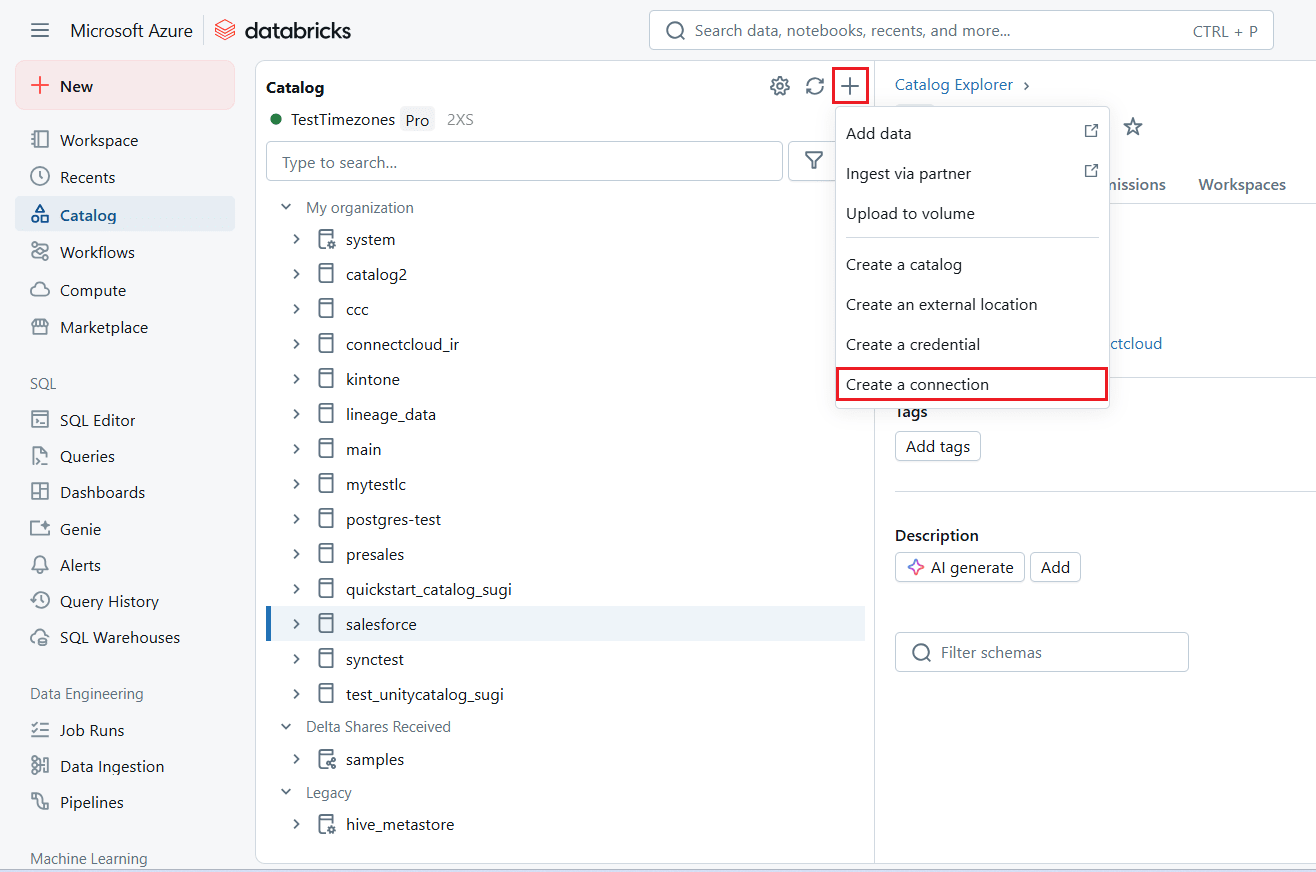
- In the Connection basics section (or Step 1 of Set up connection page), enter the following connection details and click Next:
- Connection name: a user-defined connection name.
- Connection type: select SQL Server from the drop-down list.
- Auth type: select Username and password.

- In the Authentication section (or Step 2), enter the required authentication details, and click Next:
- Host: tds.cdata.com
- Port: 14333
- User: enter your CData Connect Cloud username, displayed in the top-right corner of the CData Connect Cloud interface. For example, test@cdata.com
- Password: enter the PAT generated and copied in the previous section.

- In the Connection details section (or Step 3), enable the Trust server certificate checkbox and select the appropriate Application intent. Click Create Connection.
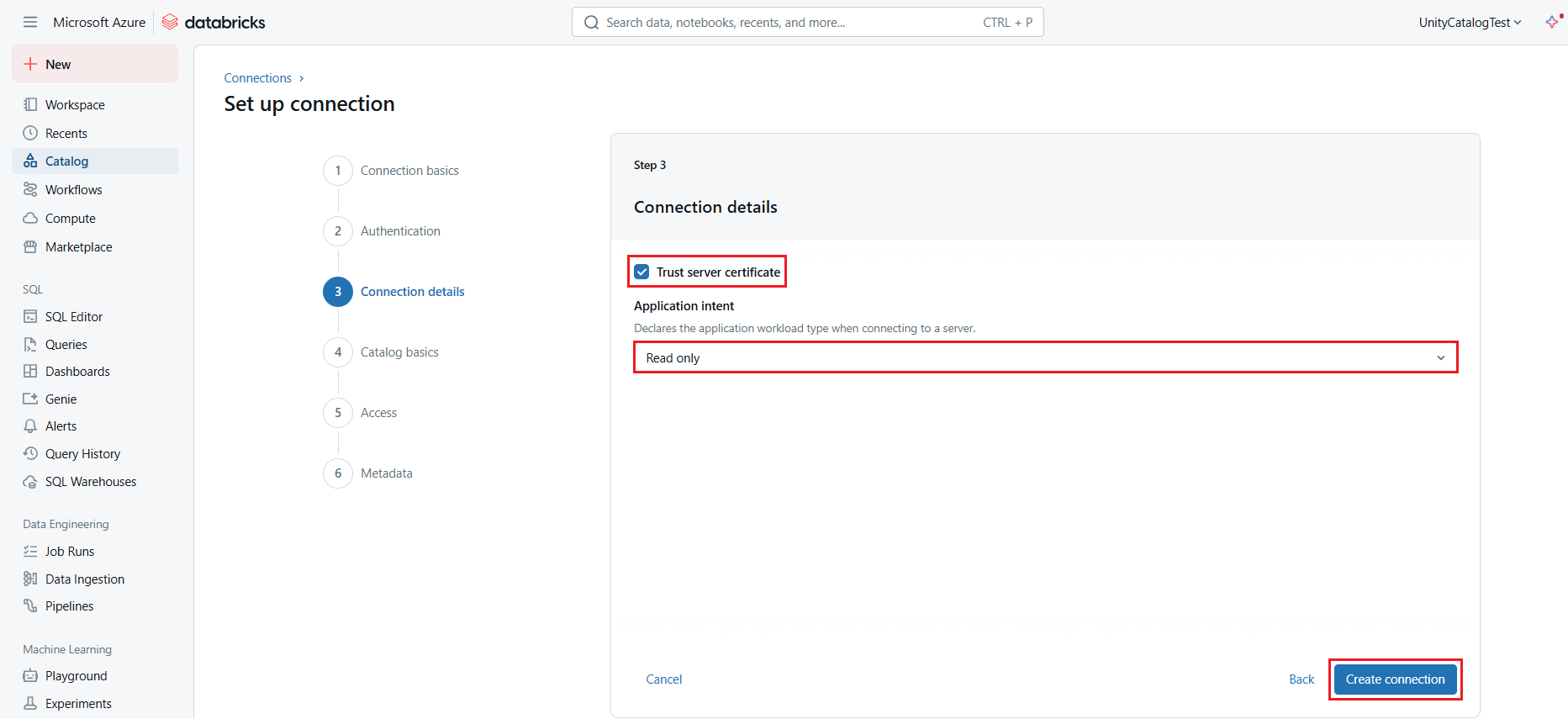
- In the Catalog basics section (or Step 4), enter the required details and click Create catalog:
- Catalog name: enter a name of your choice
- Connection: this will be the Databricks connection you defined earlier
- Database: enter your SharePoint connection name (for example, SharePoint1)
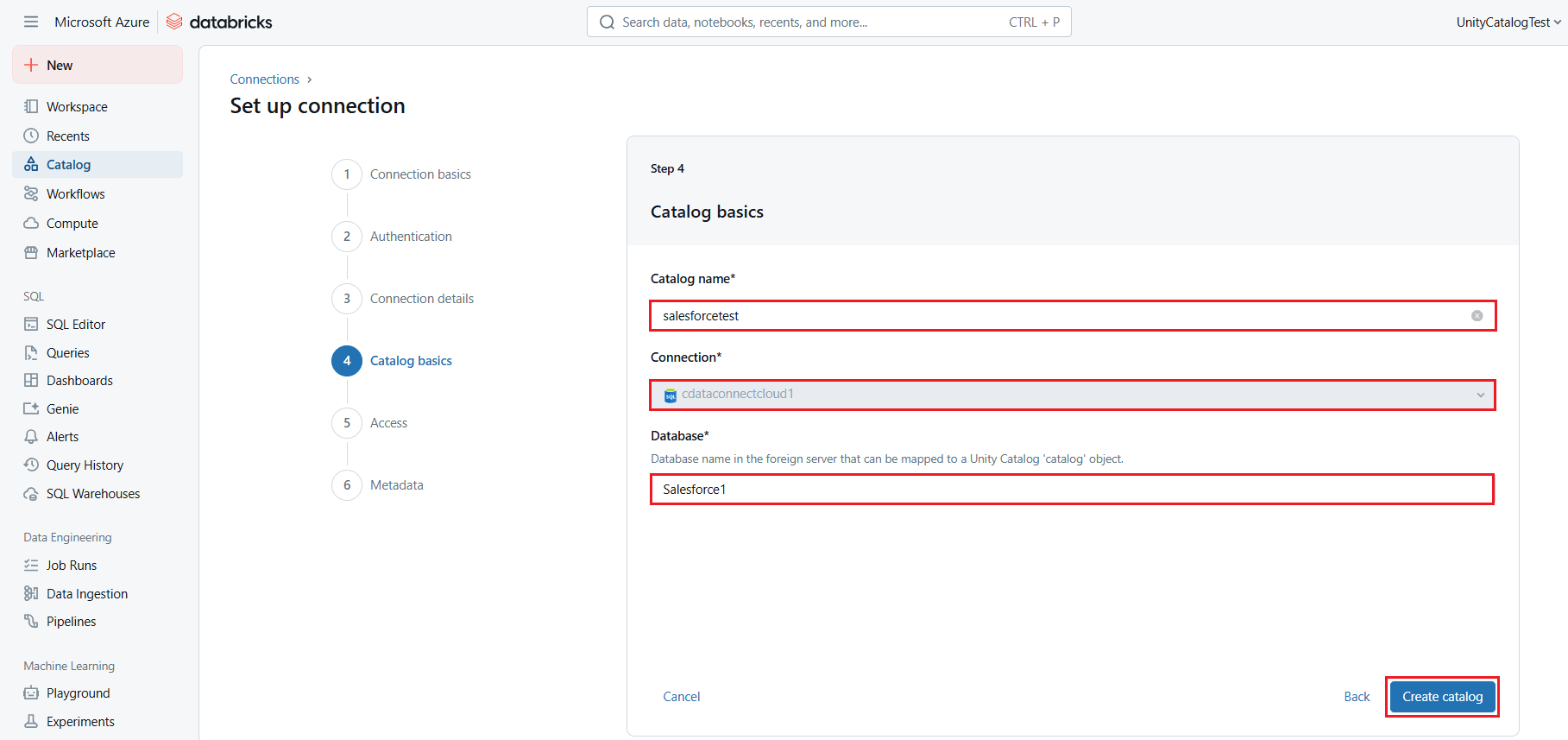
- In the Access section (or Step 5), assign the Workspace, User access rights, and Grant read or edit privileges to the catalog.
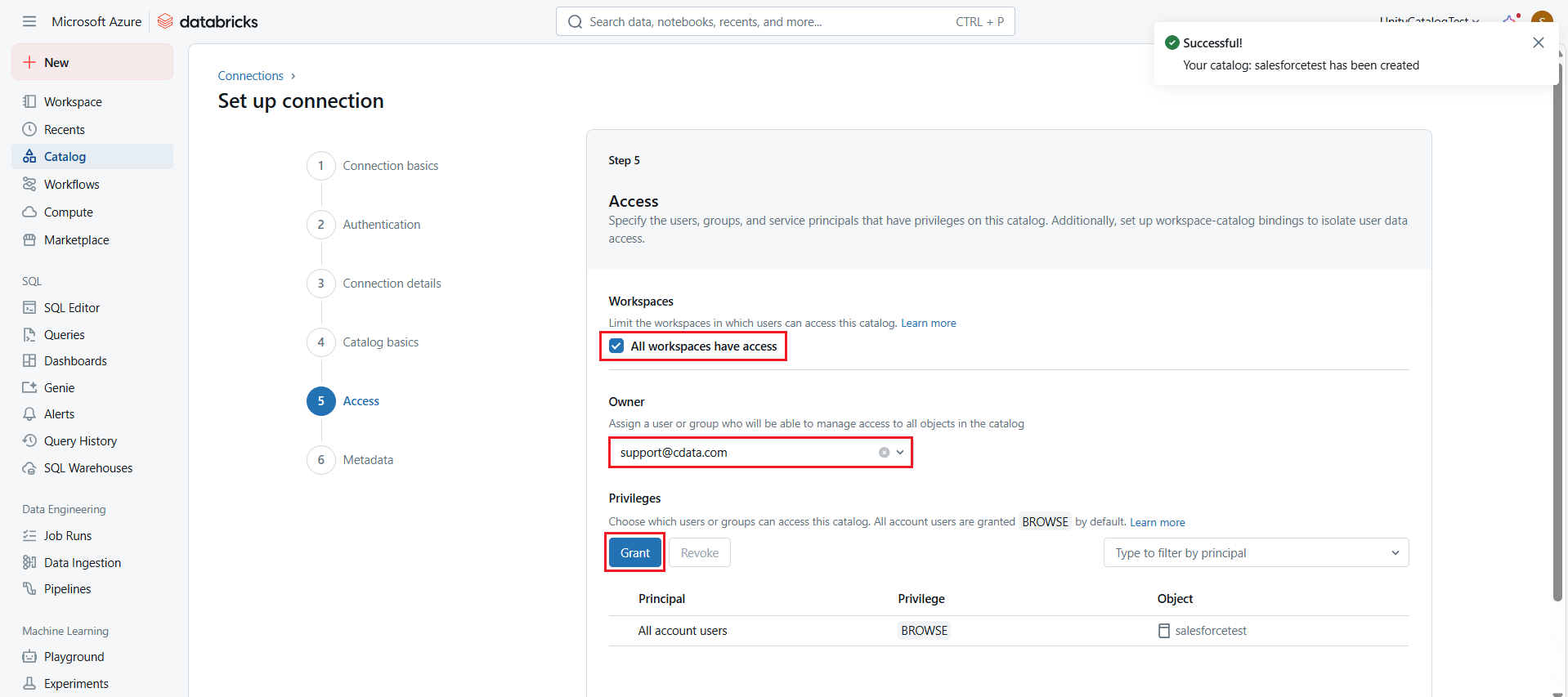
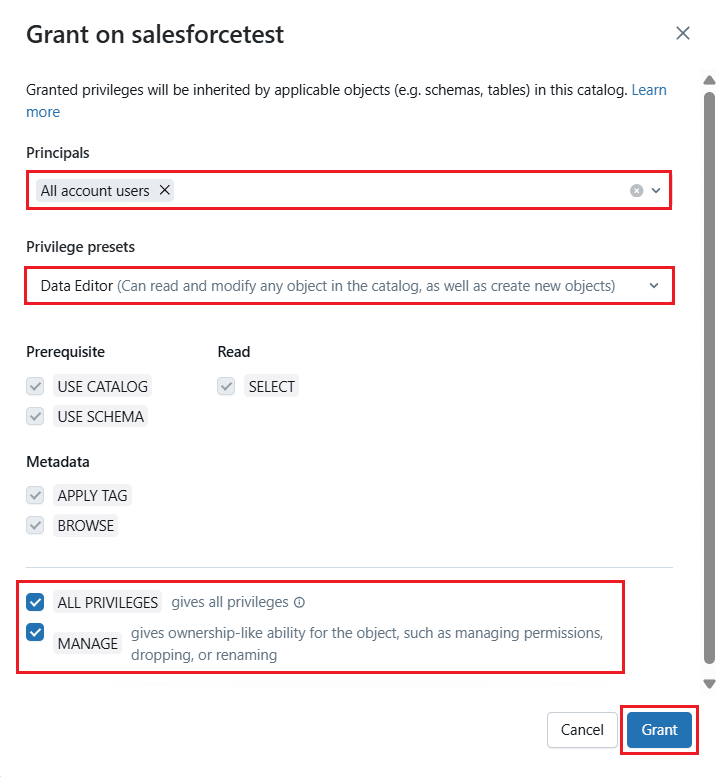
- Click Next > Save to save all the details for the catalog.
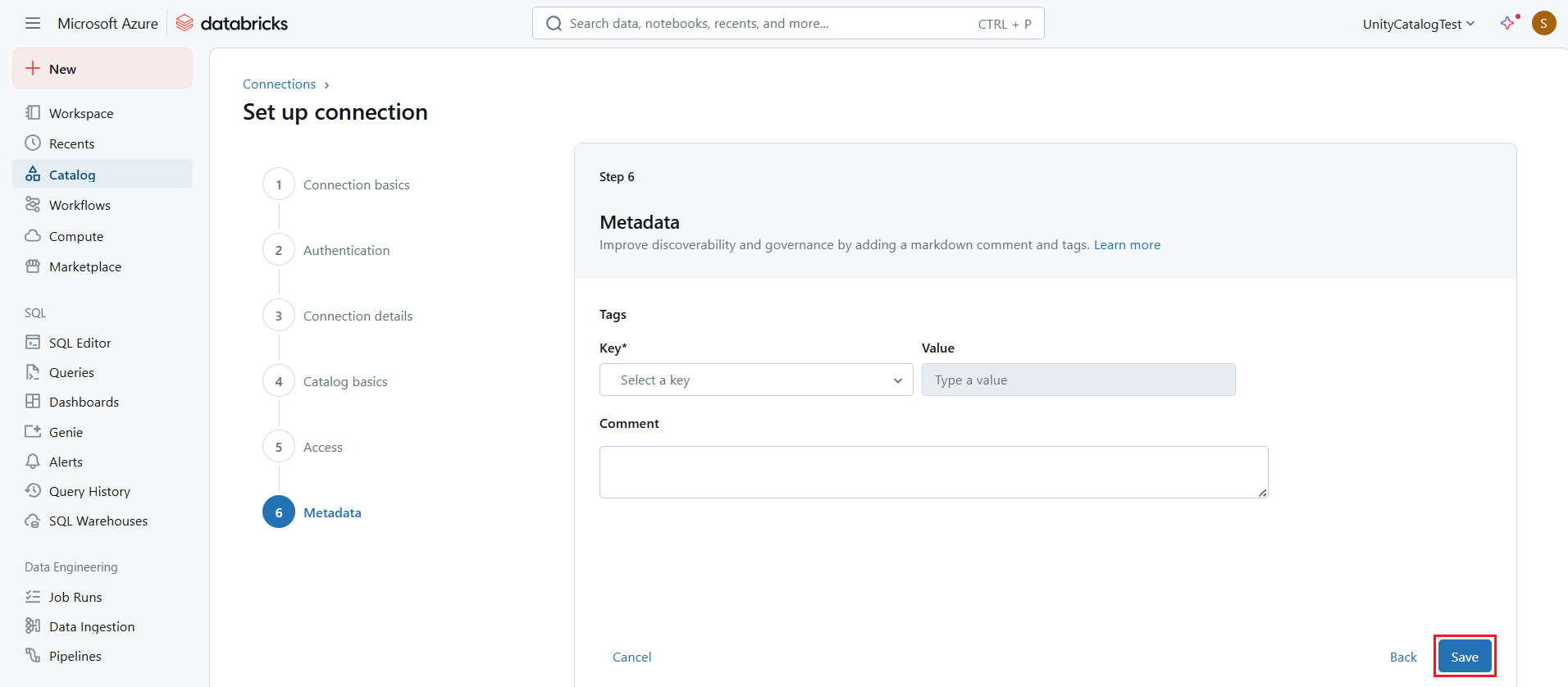
Access the catalog and visualize live SharePoint data in Databricks
To access the newly created catalog and create a dashboard to visualize live SharePoint data in Databricks, follow these steps:
- Select the catalog and expand it. A list of tables from SharePoint will appear on the screen.

- Choose the desired table and click the Overview tab to view the table metadata.
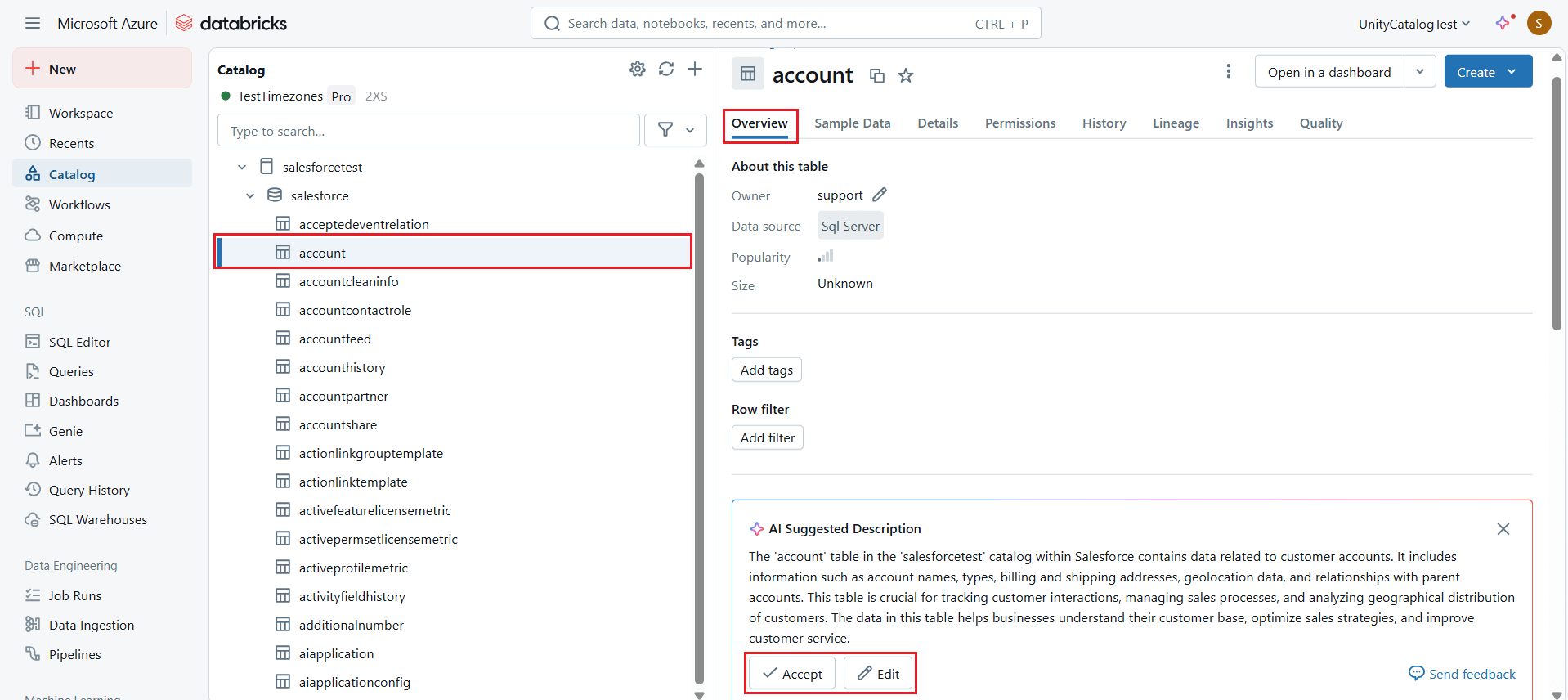

- Click the Sample Data tab to view real-time data in the table.
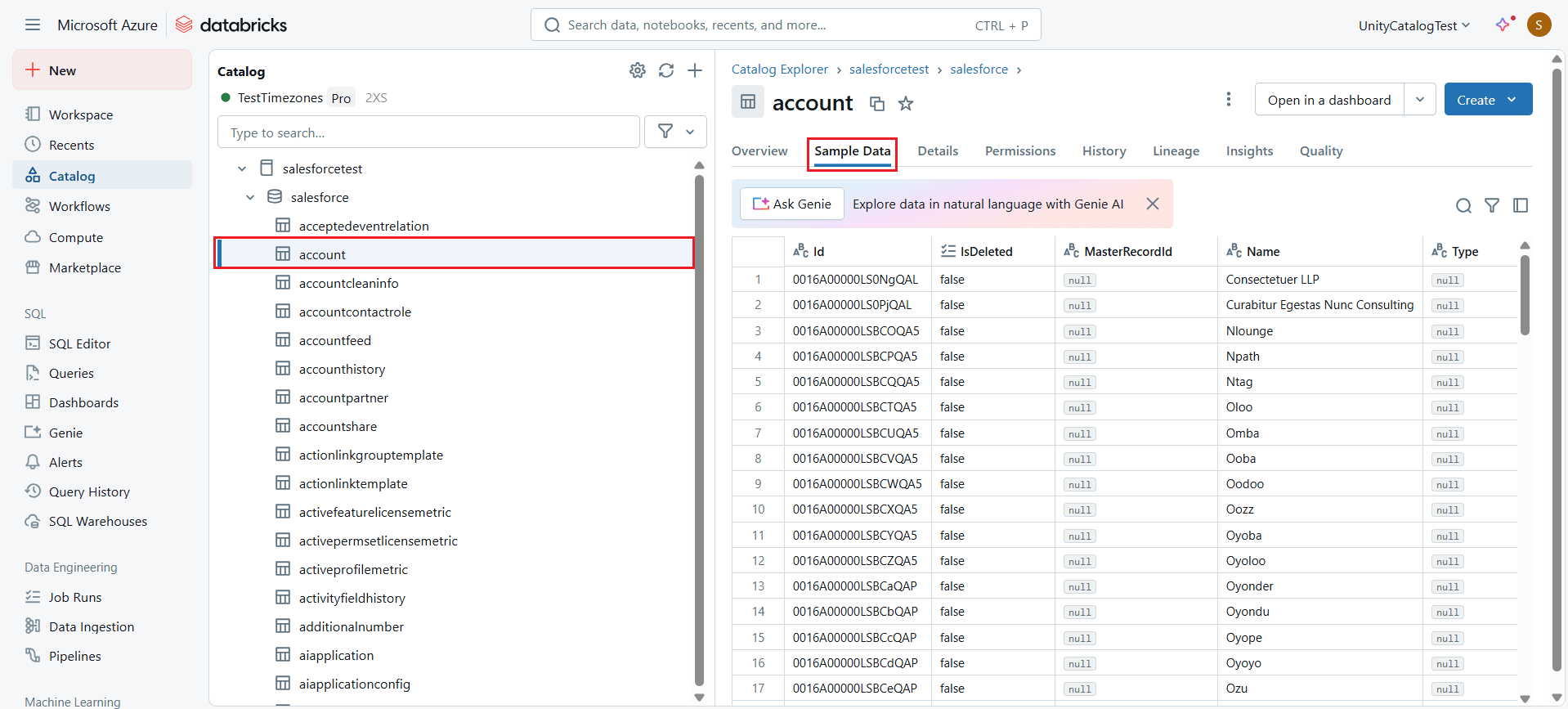
- Now, click Create at the top right corner and select Dashboard.

- Manually create a visualization by selecting at least one field in the visualization editor from the widget, or choose one of the visualization options suggested by Databricks AI.
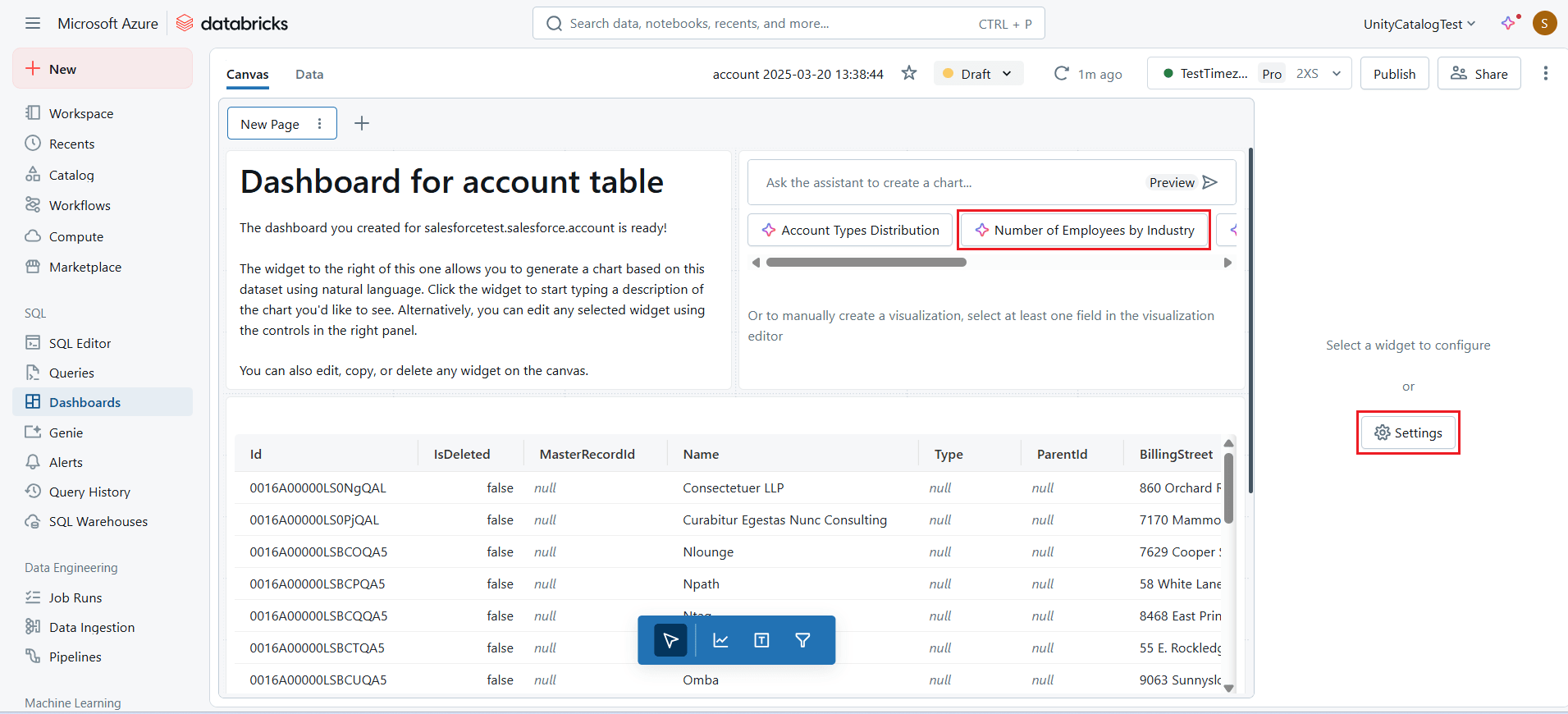
- Once the visualization is created, edit the details in the widget settings of the dashboard.

- Click Publish to publish the dashboard report.
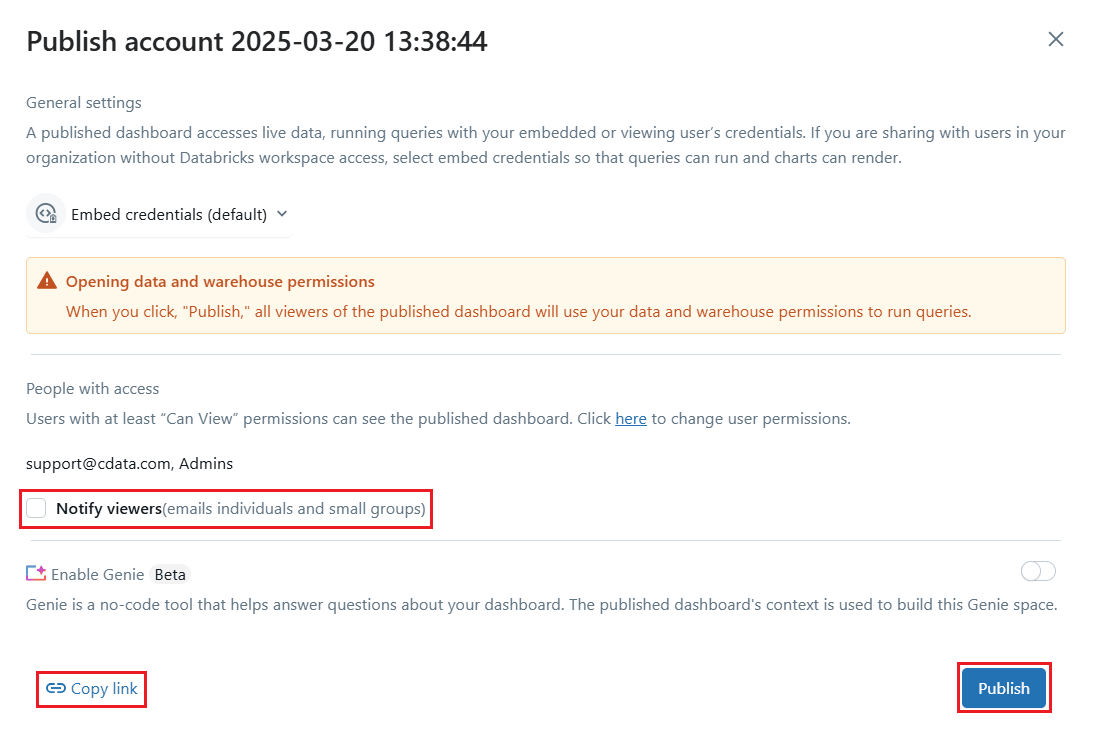
Live access to SharePoint data from cloud applications
At this stage, you have established a direct, cloud-to-cloud connection to live SharePoint data in Databricks. This enables you to create dashboards to monitor and visualize your data seamlessly.
For more details on accessing live data from over 100 SaaS, Big Data, and NoSQL sources through cloud applications like Databricks, visit our Connect Cloud page. As always, let us know if you have any questions during your evaluation. Our world-class CData Support Team is always available to help!
